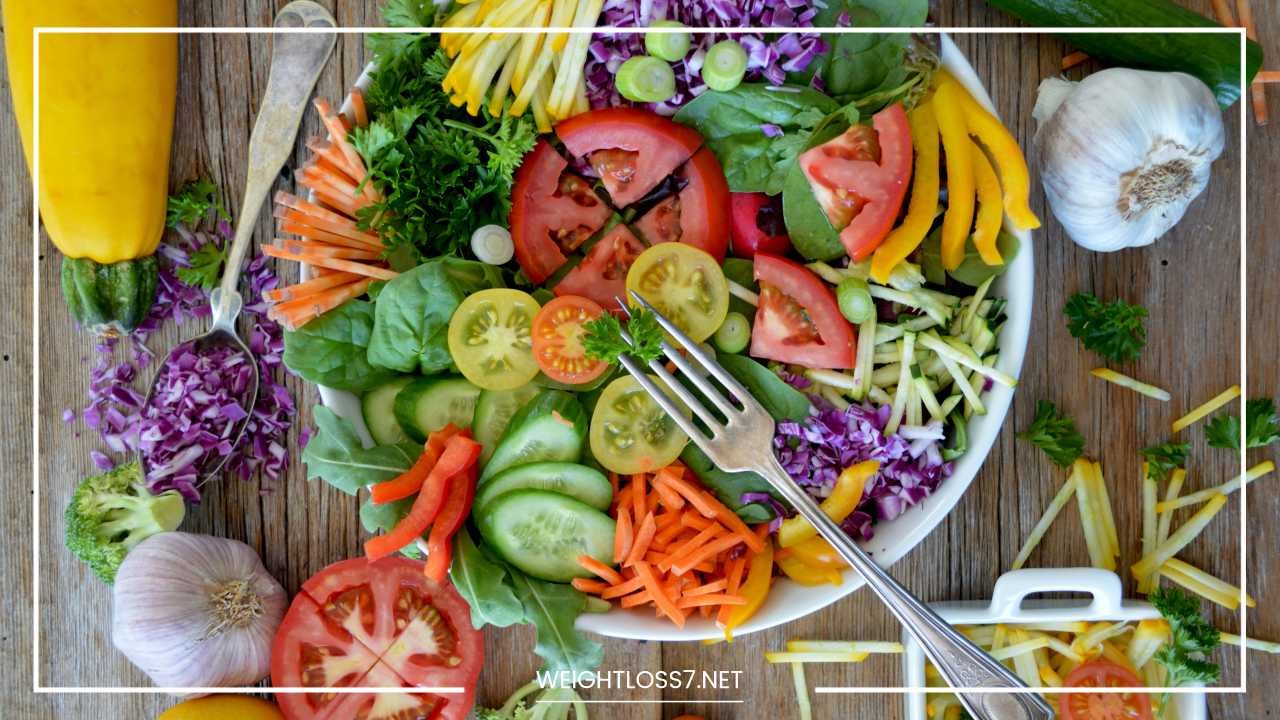Raw Food Diet 101: A Beginner’s Guide to Exploring Uncooked Cuisine

Raw Food Diet
Raw Food Diet: A Deep Dive into the World of Uncooked Cuisine
The allure of the raw food diet has captivated health enthusiasts for centuries. Proponents claim it unlocks a vibrant wellspring of health benefits, from increased energy and weight loss to a disease-resistant body.
But before diving headfirst into this unique dietary path, it’s crucial to understand its intricacies, potential benefits and drawbacks, and the realities of incorporating raw cuisine into your daily life.
This comprehensive blog post delves into the world of raw food, exploring its various forms, the science behind its supposed advantages, and the practical considerations for those considering this approach.
We’ll unveil the treasure trove of raw food options you can explore and equip you with the knowledge to navigate this dietary adventure with confidence.
Unpacking the Raw Food Philosophy
At its core, the raw food diet emphasizes uncooked and minimally processed whole foods. However, the definition of “raw” can vary depending on who you ask. Here’s a breakdown of the spectrum:
- Raw Vegan: This version eliminates all animal products, focusing solely on uncooked fruits, vegetables, nuts, seeds, and sprouted grains and legumes.
- Raw Till 4: This approach allows heating foods up to 104°F (40°C), often using dehydrators to preserve enzymes and nutrients.
- Raw Omnivore: This option incorporates raw animal products like meat, fish, eggs, and dairy alongside plant-based raw foods. It’s important to note that this approach is highly debated due to the increased risk of foodborne illness from raw animal products.
The Raw Food Allure: Potential Benefits Unveiled
The raw food diet attracts individuals seeking various health improvements. Let’s explore some of the potential benefits with a critical eye:
- Boosted Fruit and Vegetable Intake: Raw diets naturally lead to increased consumption of these powerhouse foods. This translates to a potential reduction in the risk of chronic diseases like heart disease, diabetes, and some cancers, as research suggests fruits and vegetables are packed with protective antioxidants and fiber.
- Enhanced Digestion: Proponents believe that raw foods are easier to digest due to the presence of enzymes that may be denatured by cooking. However, the human body produces its own digestive enzymes, and the significance of this benefit requires further investigation.
- Weight Management: Due to the high fiber content and lower overall calorie density of raw foods, weight loss can be a side effect for some following this diet. However, it’s important to remember that weight management is a complex issue influenced by various factors beyond just calorie intake.
- Increased Nutrient Absorption: The belief is that raw foods retain more vitamins, minerals, and antioxidants compared to cooked options. While some heat-sensitive nutrients like vitamin C may degrade slightly with cooking, other nutrients like lycopene in tomatoes actually become more bioavailable with cooking.
A Balanced Look: Potential Drawbacks to Consider
While the raw food diet has its appeal, there are also some potential drawbacks that require careful consideration:
- Nutritional Deficiencies: Raw vegan diets, in particular, can be challenging to ensure you get enough essential nutrients like vitamin B12, iron, zinc, and omega-3 fatty acids. These nutrients are typically found in higher concentrations in animal products or require specific preparation methods for optimal absorption from plant sources. Careful planning and supplementation may be necessary to avoid deficiencies.
- Food Safety Concerns: Consuming raw animal products carries a higher risk of foodborne illness from bacteria, parasites, or viruses. Improper handling or storage of raw animal products can be particularly dangerous for pregnant women, young children, and older adults.
- Limited Food Choices: Following a raw food diet can be restrictive, especially when dining out or socializing. It requires planning and preparation to ensure you have access to suitable options and avoid feeling excluded from social gatherings.
- Social Challenges: Sticking to a raw diet in social settings can be difficult. It’s important to be prepared to politely decline certain foods and find ways to navigate social gatherings without feeling pressured to deviate from your dietary choices.
Building Your Raw Food Pantry: A Culinary Adventure Awaits
If you’re curious about trying a raw food diet, here’s a glimpse into the vibrant world of ingredients that await you:
- Fruits and Vegetables: Stock up on a rainbow of seasonal produce! Think fresh berries, melons, leafy greens, tomatoes, cucumbers, peppers, and all the other delightful options that Mother Nature provides.
- Nuts and Seeds: Almonds, walnuts, cashews, chia seeds, flaxseeds, and hemp seeds are excellent sources of healthy fats, protein, and fiber. Explore nut butters and seed butters for added variety and convenience.
- Sprouted Grains and Legumes: Sprouted lentils, chickpeas, sunflower seeds, and brown rice add a protein and fiber punch to your diet. Sprouted grains are easier to digest than their unsprouted counterparts and may offer slightly more bioavailable nutrients.
- Healthy Fats: Extra virgin olive oil, avocado, and coconut oil provide essential fats for your body. Experiment with different varieties to add richness and flavor to your dishes.
- Sea Vegetables: Kelp, wakame, and dulse are rich sources of iodine and other minerals. Be sure to source them from reputable vendors to avoid potential contamination.
- Herbs and Spices: Fresh herbs and spices not only add flavor and aroma to your dishes but also offer a range of health benefits. Explore options like cilantro, basil, parsley, ginger, garlic, turmeric, and chili flakes.
Essential Kitchen Tools for Raw Food Success
Equipping your kitchen with some helpful tools can make your raw food journey smoother and more enjoyable:
- High-Powered Blender: A powerful blender is a versatile tool for making smoothies, nut butters, seed dressings, dips, and sauces. Look for one with a sturdy motor and variable speed settings.
- Food Processor: A food processor allows you to shred vegetables, make nut flours, and create raw “pasta” noodles from zucchini or sweet potato.
- Spiralizer: This handy tool lets you create vegetable noodles from zucchini, carrots, beets, and other firm vegetables, adding a fun and interesting element to your raw meals.
- Dehydrator: If you’re interested in exploring raw crackers, breads, or veggie jerky, a dehydrator allows you to preserve food at low temperatures while maintaining most of the nutrients.
Building a Sustainable Raw Food Lifestyle: Essential Tips
Embarking on a raw food journey requires dedication and planning. Here are some tips to set yourself up for success:
- Do Your Research: Educate yourself about the different types of raw food diets and their specific nutritional needs. Reliable sources like academic journals, registered dietitians’ websites, and reputable health organizations are your best bets.
- Consult a Registered Dietitian: A qualified dietitian can create a personalized plan that ensures you meet all your nutrient needs, especially if you’re following a raw vegan diet. They can also guide you on appropriate supplementation if necessary.
- Start Slowly: Don’t make drastic changes overnight. Gradually incorporate more raw foods into your diet over time to allow your body to adjust and avoid overwhelm.
- Focus on Variety: Explore a wide range of raw fruits, vegetables, nuts, seeds, and sprouted grains to ensure you get a good mix of nutrients and keep your palate happy.
- Plan Your Meals: Planning meals and snacks in advance will help you avoid unhealthy choices when cravings hit and ensure you have a variety of satisfying raw options readily available.
- Find a Support System: Connect with others who follow a raw food lifestyle for guidance, motivation, and recipe inspiration. Online forums, social media groups, and local meetups can be valuable resources.
- Embrace the Culinary Creativity: The raw food world is full of exciting possibilities! Explore raw recipe websites, cookbooks, and online tutorials to discover new ways to prepare delicious and nutritious raw meals.
The Raw Food Diet: Fad or Sustainable Choice?
The raw food diet can be a path to a healthier lifestyle, but it’s not a one-size-fits-all approach. While it offers potential benefits like increased fruit and vegetable intake and improved digestion, careful planning and potential supplementation are crucial to avoid nutritional deficiencies.
For some, the restrictive nature and social challenges of the raw food diet may outweigh the potential benefits. It’s important to listen to your body, prioritize your overall well-being, and find a dietary approach that is sustainable and enjoyable for you in the long term.

















